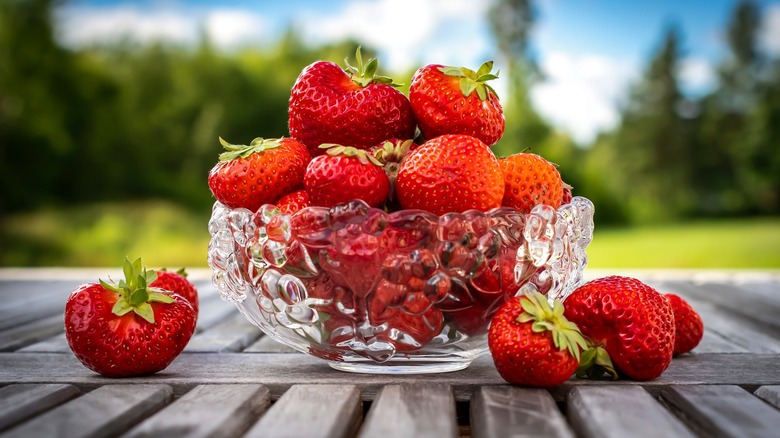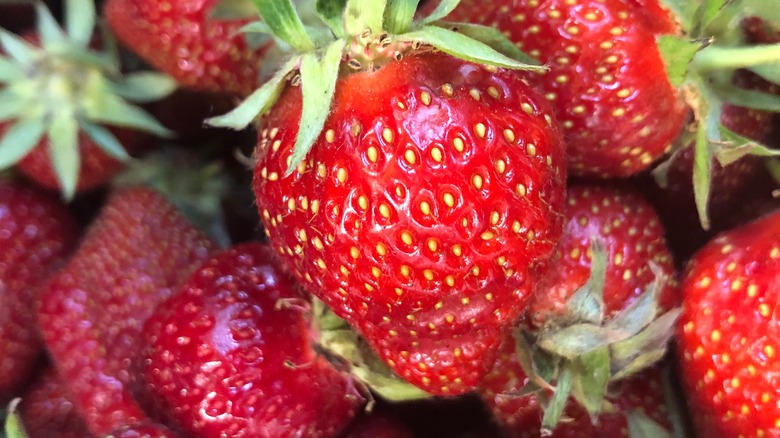If A Strawberry Isn't A Berry, Then What Is It?
Fruit and vegetable categories can be confusing. It's all too easy to assume produce falls under the fruit or vegetable umbrella based on its color, taste, or how it's generally prepared in recipes. For example, if you thought avocado was a vegetable, you wouldn't be the first. While this buttery ingredient is often found alongside vegetables in sandwiches or salads, it's actually a fruit. In fact, avocados' soft meat and seeds place them squarely in the berry category.
What isn't a berry, but is often thought to be so, is a strawberry. How can this be? Not only is the word "berry" literally half of the fruit's name, but it's often lumped together in descriptions and recipes with blueberries, raspberries, and blackberries. But whoever named strawberries was either mistaken or not too concerned with scientific accuracy. These fruits may have been named after their mulching process, which usually involves straw, or because they appeared to be "strewn berries" back in the day — no one's really sure. What we do know for certain, however, is that these red fruits are not berries. So what are they?
Strawberries are accessory fruits
The scientific name for commercially grown strawberries is Fragaria x ananassa, and they are part of the Rosaceae plant family. This means that they're close relatives to a plethora of other fruits, including raspberries, cherries, and apples – but they fall under the Fragaria genus, unlike their berry cousins. Scientifically, strawberries are considered accessory fruits, as their flesh comes from the flower of their plant, while the fruit of berries comes from a single ovary.
If an accessory fruit sounds like a rare subcategory of produce, you may be surprised to learn that many of your favorite fruits fall under this umbrella. Apples, watermelon, and pineapple are all examples of accessory fruits. In this way, they're closer botanically to strawberries than actual berries are. To be classified as a berry, a fruit must meet very specific criteria: It must have fruit derived from one ovary's flower and contain two or more seeds.
This means that strawberries aren't the only posers in the berry world. Raspberries are also accessory fruits, not berries because they come from flowers that have multiple ovaries. But if you call either of these fruits berries in casual conversation, we doubt anyone will point out the plants' ovary count and correct you.

